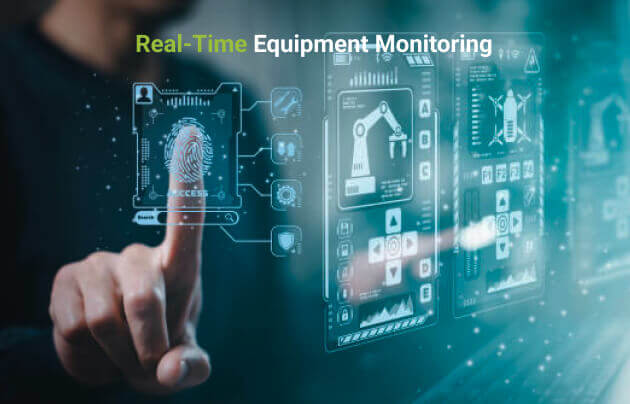


Fleet Management
Asset Tracking and Monitoring
Route Optimization
Warehouse and Inventory Management
Cold Chain Monitoring
The construction industry is experiencing a digital revolution driven by the power of the Internet of Things (IoT). This transformation is not only reshaping how infrastructure projects are planned and executed but is also redefining how construction sites and heavy machinery are monitored, managed, and maintained.
Traditionally known for being labor-intensive and dependent on manual processes, the construction sector is now turning to IoT to enhance operational efficiency, reduce risks, and streamline workflows across all project phases.

Real-Time Equipment Monitoring
IoT sensors embedded in heavy equipment collect real-time data on various operational parameters such as engine performance, fuel consumption, location, and operating hours. This continuous monitoring helps track equipment usage and health, providing insights into equipment performance and potential issues.
Key Benefits:
IoT in construction involves the integration of smart sensors, tracking devices, telematics, and cloud-based platforms to connect people, equipment, and job sites. This connectivity allows for the real-time collection and analysis of data, which can be used to automate maintenance, improve safety, manage assets remotely, and make data-backed decisions that drive productivity.
For construction businesses, the ability to monitor machine performance, fuel usage, equipment location, and environmental conditions from a single dashboard is a game-changer. It enables proactive maintenance, reduces downtime, mitigates theft, and ensures regulatory compliance. From excavators and cranes to trucks and power generators, every piece of heavy equipment can now be part of a smart, interconnected ecosystem.
Asset Tracking and Management
Construction sites often span large areas, making it difficult to track the location and movement of equipment. IoT-enabled GPS trackers provide real-time location data for all equipment, ensuring that assets are being used efficiently and reducing the risk of theft or loss.
Key Benefits:

Remote Control and Automation
With IoT, construction companies can remotely monitor and control heavy equipment. In some cases, equipment can be operated remotely, reducing the need for human intervention in dangerous environments.

Safety and Compliance Monitoring
Wearable IoT devices and sensors embedded in heavy equipment can monitor environmental factors such as temperature, noise levels, and air quality. They can also detect dangerous situations, such as equipment malfunctions or worker proximity to hazardous areas, and send alerts in real time.
Want To Talk To An Expert Before Getting Started?